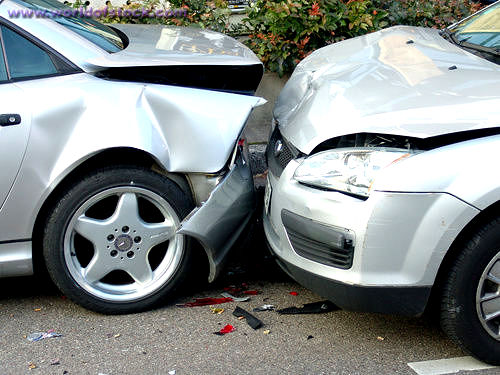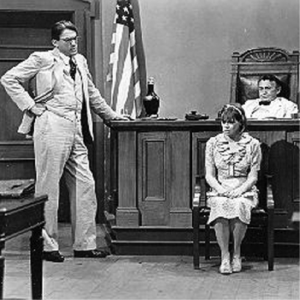 According to the Florida Bar, the Daubert Standard has a large impact on the admissibility of expert witness testimony. Relatively recent changes to Florida’s laws impact how victims seeking damages and recoveries can use expert witness testimony to support their cases. Many personal injury cases employ the testimony of expert witnesses, such as doctors, to explain to judges and juries the nature of a victim’s injuries and to show damages. Expert witnesses can explain to a judge or a jury expected recovery times, expectations regarding long term care, and can help personal injury lawyers justify the amount of money they are seeking for compensation on behalf of their clients. The defense is likewise permitted to hire expert witnesses to support its own claims.
According to the Florida Bar, the Daubert Standard has a large impact on the admissibility of expert witness testimony. Relatively recent changes to Florida’s laws impact how victims seeking damages and recoveries can use expert witness testimony to support their cases. Many personal injury cases employ the testimony of expert witnesses, such as doctors, to explain to judges and juries the nature of a victim’s injuries and to show damages. Expert witnesses can explain to a judge or a jury expected recovery times, expectations regarding long term care, and can help personal injury lawyers justify the amount of money they are seeking for compensation on behalf of their clients. The defense is likewise permitted to hire expert witnesses to support its own claims.
Yet, the revised standards for expert witnesses may change the way auto accident lawyers go about choosing their witnesses. Florida courts use the Daubert Standard. According to Cornell University Law School, the Daubert Standard is an assessment made by a judge to determine whether an expert’s testimony is based upon scientific reasoning and valid scientific study. The judge will often ask several questions about how an expert witness went about presenting evidence. First, the expert witness’s technique must be testable and must have been tested. Secondly, the judge will consider whether any evidence or expert testimony has been subject to peer review. Next, the judge will ask about possible margins of error, and whether controls were used in any studies. Finally, the judge will consider whether the methodology or results are accepted in the scientific community.
These standards significantly raise the bar for expert testimony presented in a case and they also limit who can present expert testimony. Expert opinion, on its own, is no longer allowed. Previously, courts used the Frye test, which required that statements being made in court meet the standards of general acceptability in the field to which the person belongs. The Daubert Standard can have immense implications for certain personal injury lawsuits. For example, in a case where a worker is claiming that workplace stress led to a miscarriage, the victim suing will have to present relevant studies to the court to show how stress on the job, or how stress in general, can result in a miscarriage. If the victim wants to use an expert witness, the victim will have to find an expert witness who has performed studies on stress and miscarriage or who has worked on the studies, to testify in court.
 Most of us have ordered the specials at our favorite Chinese restaurant. You get to pick and choose from a variety of choices. Usually you pick a soup from column A. Then another choice for appetizer from Column B. Then yet another choice for the main course from Column C. You get to pick and choose. In a premises liability trial, the defense will usually present a Chinese menu of defenses and offer the jury a variety of ways to deny the injured person a full, fair and complete recovery. The Miami Premises Liability Lawyers at Wolfson & Leon deal with these defenses everyday.
Most of us have ordered the specials at our favorite Chinese restaurant. You get to pick and choose from a variety of choices. Usually you pick a soup from column A. Then another choice for appetizer from Column B. Then yet another choice for the main course from Column C. You get to pick and choose. In a premises liability trial, the defense will usually present a Chinese menu of defenses and offer the jury a variety of ways to deny the injured person a full, fair and complete recovery. The Miami Premises Liability Lawyers at Wolfson & Leon deal with these defenses everyday. Miami Personal Injury Attorney Blog
Miami Personal Injury Attorney Blog



 If you are driving a car and you rear end another vehicle, is it automatically your fault? The short answer is no. There are certain facts that may help you prove that the rear end car accident is not your fault.
If you are driving a car and you rear end another vehicle, is it automatically your fault? The short answer is no. There are certain facts that may help you prove that the rear end car accident is not your fault. The
The  Can I get the other side to pay my attorney’s fees in my Miami car accident case? The answer is sometimes, yes.
Can I get the other side to pay my attorney’s fees in my Miami car accident case? The answer is sometimes, yes. A Miami jury split the fault in a
A Miami jury split the fault in a  If you have a personal injury case, you might feel that you have no control. Everyone else has the power – the attorneys, the insurance company, the judge, or the jury. But that is not entirely true. You do have some power. You have the ability to avoid the mistakes that can cause you to lose your personal injury case. It doesn’t matter if you were injured in a
If you have a personal injury case, you might feel that you have no control. Everyone else has the power – the attorneys, the insurance company, the judge, or the jury. But that is not entirely true. You do have some power. You have the ability to avoid the mistakes that can cause you to lose your personal injury case. It doesn’t matter if you were injured in a  A member of the well-known Miami Mas Canosa family has filed a class action lawsuit against Tremont Towing because his car got towed from a private parking lot during non-business hours. He claims that the towing company violated Miami-Dade County and City of Miami Beach laws requiring private property owners to authorize every tow with a signature. The lawsuit alleges that Tremont Towing cannot operate under a blanket request to tow vehicles without specific individual approval. The class action lawsuit also alleges that the City of Miami Beach gets a percentage of the tow fees and, as a result, the City is also named as a defendant. While taking such a position is popular (everyone hates towing companies until you need one), it is wrong and the class action lawsuit should be dismissed.
A member of the well-known Miami Mas Canosa family has filed a class action lawsuit against Tremont Towing because his car got towed from a private parking lot during non-business hours. He claims that the towing company violated Miami-Dade County and City of Miami Beach laws requiring private property owners to authorize every tow with a signature. The lawsuit alleges that Tremont Towing cannot operate under a blanket request to tow vehicles without specific individual approval. The class action lawsuit also alleges that the City of Miami Beach gets a percentage of the tow fees and, as a result, the City is also named as a defendant. While taking such a position is popular (everyone hates towing companies until you need one), it is wrong and the class action lawsuit should be dismissed. According to the
According to the